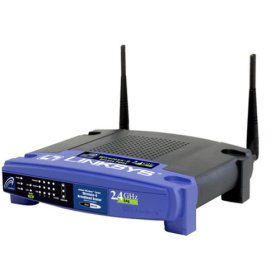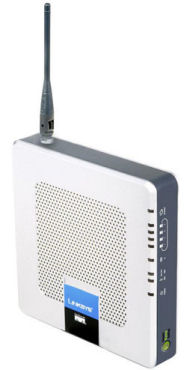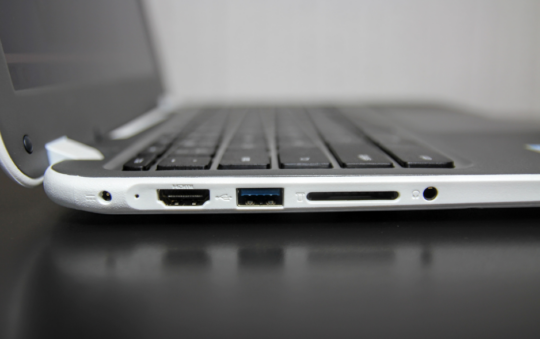The Linksys/Cisco WRT54G Router line is famous not so much for what it is, but what it can be thanks to alternative versions of firmware that enable a wide range of networking features. But first you need do know which of its many models does what.
By Aaron Weiss
If any wireless router could be described as famous it would be the Linksys/Cisco WRT54G. Should you rummage through the search logs at Google, its quite possible that somewhere just behind “nude” and “Paris Hilton” you would find “wrt54g,” possibly all from the same IP addresses. But, the WRT54G is famous not so much for what it is, but what it can be.
Alternative versions of firmware, which can be loaded onto the router in place of Linksys’s official software, enable a wide range of networking features unavailable in most budget-priced routers. As flexible as the WRT54G is, though, choosing one can also be confusing — all 54G’s are not created equal. Since its inception, the WRT54G family tree has grown. Today, you will find several versions of the WRT54G floating around. And by “several” we mean eight. That’s just one branch of the tree — there are at least six other branches with yet more variations of the WRT54G. If you’re in the market for a WRT54G, you need to know which models can do — or become — what you want.
Original Flavor
Most readers of this story are interested in loading an alternative firmware onto their WRT54G. (Either that or this article came up on your search for “nude Paris Hilton” and you are now starting to become extremely disappointed.) DD-WRT is the most popular alternative, but changes to the Linksys router over the years mean that this software does not run equally well on all versions.

Linksys/Cisco has kept the same name — WRT54G — for a product that has undergone several significant changes over time. To draw a parallel, a 2007 Honda Accord is hardly the same vehicle as the 1998 version. And some would say the changes aren’t for the better.
Released in 2003, the original WRT54G, version 1.0 (serial numbers beginning with CDF0 and CDF1), introduced a “perfect storm” of factors, which led to the development of unofficial, third-party, open source firmware alternatives. With 16MB of RAM and 4MB of flash memory where the firmware (operating system) resides, the unit had plenty of storage for a large codebase. Unlike other router models, Linksys developed a stock firmware for the WRT54G using open source code. The code’s licensing terms required Linksys to make the source freely available. And thus an ecosystem was born, as programmers added to, debugged and enhanced the stock code, filling it out with advanced and convenient networking features not normally seen in relatively cheap routers, or sometimes in any routers at all.
With the next few revisions of the WRT54G hardware, Linksys only made the environment even better for alternative coders. Version 2 (serial number CDF5) bumped the router’s CPU speed from 125MHz to 200MHz, and even outfitted some models with 32MB of RAM. Though this extra memory was not officially supported, some of the alternative firmware could use it. By version 3 (CDF8), the CPU had increased to 216MHz.
With version 4 (CDFA) of the WRT54G, Linksys actually dialed down the CPU speed back to 200MHz and changed to a new wireless chipset. These changes alone did not adversely affect the various forms of alternative firmware, and in fact, due to V4’s widespread availability and competitive pricing in mass electronics stories, this model brought DD-WRT and alternative firmware in general to a wider audience.
Then everything changed.
This Tastes Funny
Taking a page from the Coca-Cola Corporation Guide to Corporate Mismanagement, Linksys pulled a “New Coke.” Version 5 (CDFB/CDFC) chopped in half the RAM, to 8MB. It did the same to the flash memory, to 2MB. And it dumped the open source stock firmware with a closed source proprietary operating system called VxWorks. Basically, V5 of the WRT54G was a big middle finger to the alternative firmware community. With so little memory for code, and an inaccessible OS in place, alternatives were shut out. Among the hackers, these models are known as “neutered.”
The resourceful hackers did ultimately find a way to install an extremely stripped-down version of DD-WRT onto V5 and V6 (CDFD) models of WRT54G, but the results are more impressive than useful. Avoid these models, or set them up as stock routers at grandma’s house (unless grandma is also a DD-WRT hacker).
The situation is a little bit better on the Version 8 (CDFF/CDFG) WRT54G, but still requires some tricky procedures to load the new firmware, and this router still has half the memory of the “classic” models. Furthermore, Linksys removed the last vestige of dignity from an already-neutered product — its detachable antenna. V8 users can no longer swap the stock antenna with more powerful alternatives.
Classic Coke
As foretold in the aforementioned Guide to Corporate Mismanagement, when one replaces a solidly successful product with an inferior downgrade, one later re-introduces the original product with much fanfare and, if possible, a higher price.
That product is the WRT54GL, the classic Coke in the WRT54G family tree.

With 16MB of RAM, 4MB of flash, and a 200MHz CPU, the WRT54GL (CL7A/CL7B/CL7C), the WRT54GL is basically a revival of the WRT54G V4. With a current street price around $70, the WRT54GL runs about twice what a used V4 might go for on eBay, but in its favor, the GL is new stock.
Power-users Look Here
The WRT54G has not only several generations of ancestors, but siblings, too. They come with more brawn than the original, but at a price.
In parallel with the WRT54G, Linksys has sold its “Speedbooster”-enabled sibling, the WRT54GS. Speedbooster is an enhancement to 802.11g which claims up to 30% performance gain, particularly when paired with a Speedbooster-enabled client. But for alternative firmware fans, this isn’t the main attraction of the GS. Rather, the original V1.0 GS (CGN0/CGN1) includes 32MB of RAM and 8MB of flash memory, twice that of its WRT54G V1.0 relative.
The extra memory allows power-users to create a small file-system directly in the router, where additional scripts and data can be stored to further enhance its functionality. The EZPlanet project adds enhancements to DD-WRT, which use the extra memory to support load balancing across multiple broadband connections, for example.
Much like the WRT54G, the GS has been revised by Linksys several times, eventually halving its memory starting with V4 (CGN6). V5, once again, brought about the proprietary VxWorks OS, with V6 and V7 continuing the WRT54GS’ transformation into a mere shadow of its former self. Among WRT54GS models, versions 3 and earlier are the most useful for power users.
But wait, there’s more! Like the revivalist WRT54GL, Linksys has also introduced the WRTSL54GS. Just in time, too, before they run out of letters. The ‘SL54GS takes the best features of the classic WRT54GS — 32MB of RAM and 8MB of flash — tosses in a spiffy new 264MHz CPU, a Linux-based firmware easily upgraded with an alternative, and just for good measure, a USB port. The port supports external storage, which can be shared and managed over the network via the router’s firmware. Or, with the right alternative firmware, the WRTSL54GS can run an embedded Bittorrent client and store files directly onto attached storage with no host computer at all and just 7 watts of power consumption.
At just over $100 street price, the WRTSL54GS may not be the bargain of a second-hand WRT54G V4, but it’s still a small chunk of change for a boatload of features.
The Weird Aunts and Uncles
In fact, Linksys sells a variety of other routers with the name WRT54Gxxx, where xxx represents even more combinations of letters and numbers not seen in this story. Most of these models are very specialized — for example, the WRT54GP2 includes an integrated ATA telephony adapter for VoIP.
But, family name alone doesn’t mean that these routers support alternative firmware — you can’t load DD-WRT, for example, onto the WRT54GP2.
For best results with alternative firmware, stick with the two main branches of the WRT54G family tree: the original models up to V4, the GL model, the GS models up to V3, or the SL54GS with USB storage.
Aaron Weiss is a freelance writer and editor based in upstate New York.




